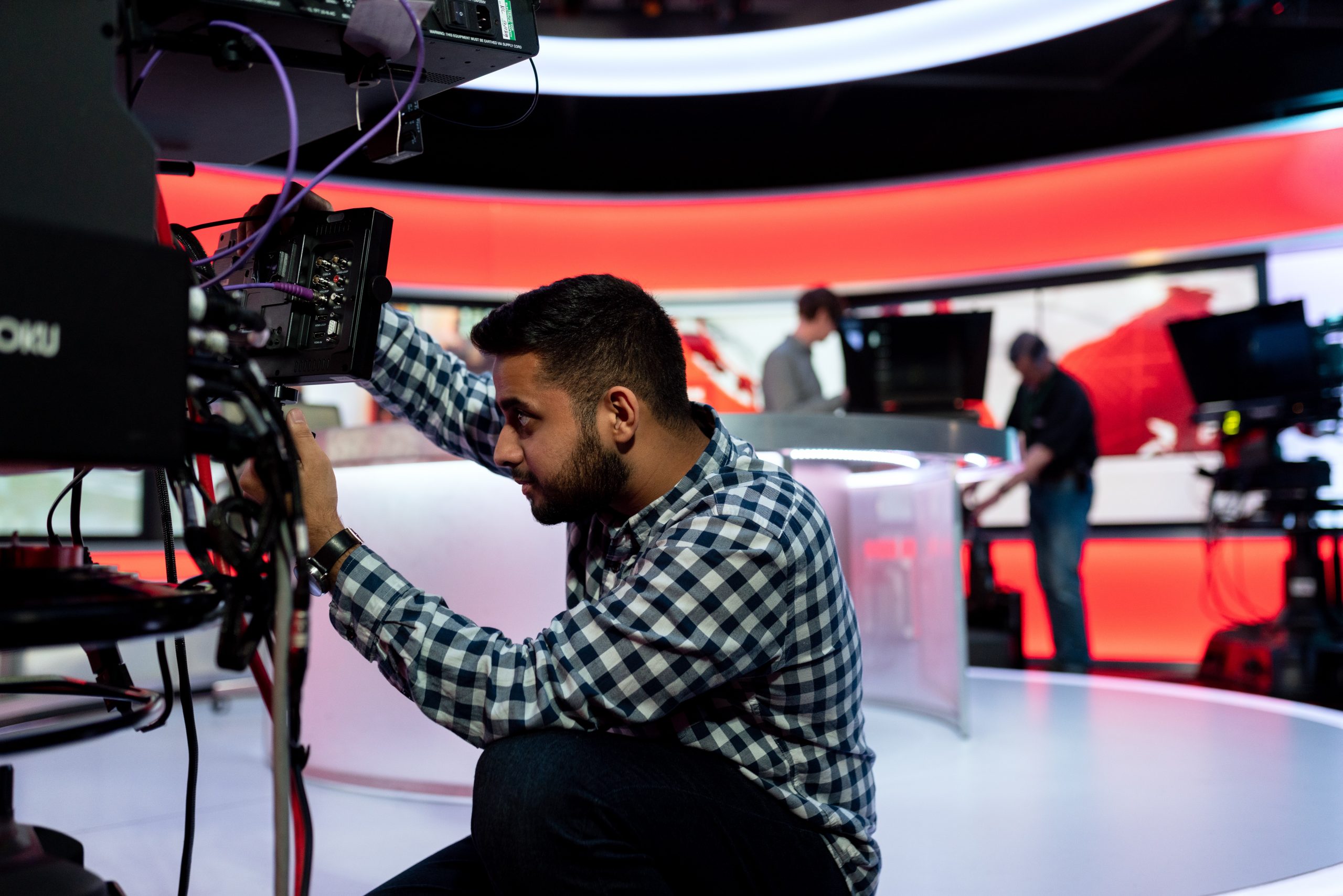For centuries, South Asians have been featured prominently in British culture yet to this day there’s still misrepresentation whether that stems from the media, our TV screens or generational preconceptions. Britain is one of the most multicultural meccas in the world and for all intents and purposes an inclusive country with a mesh of cultures entwined with tradition. So why are we still getting it wrong when it comes to type casting on and off screen?
Historical Representations
The foundation of early trading colonies in India and the British East India Company, which dates back to the 1600s, marked the start of a long-standing political and cultural relationship between Britain and South Asia.
In order to alleviate manual labour shortages (in the post- War reconstruction of Britain), many South Asians were recruited to work on the railways, on Heathrow Airport, in the West Midlands iron foundries, in Sheffield and Scunthorpe steelworks, in a rubber factory in Southall (London), and in textiles factories in Lancashire and Yorkshire.
South Asian doctors were also recruited for the new National Health Service. By 1932, there were around 7,000 South Asians in the UK and when semi-skilled and unskilled men from Pakistan and India came into the country in search of work, the number grew significantly. By 1961, this population had grown to about 100,000. Hereafter, the 2001 UK census showed 3.9% of the population to be ‘Asian’ or ‘British Asian’ (just over 2.3 million people).
In contemporary Britain, the phrases “inclusion” and “BAME” are front and centre. But, in terms of truly representing the British people, what does it signify? The limited representation of South Asians has been carried out in a highly satirical manner in many existent TV series, as we have seen with Apu from The Simpsons for example. He is portrayed by a white male hiding behind an animated brown-face, putting on a “hilarious” Indian accent.
Pawan Dhingra, professor of sociology and American studies at Tufts University, explained how “many of the south Asians who came in the 60s, 70s, even the 80s, were of a relatively finite number of occupations. They came as physicians or engineers and then, later, as computer scientists.” This contributed to the self-fulfilling stereotype of south Asians as medics and engineers. “It’s very common, regardless of your ethnicity, for children of people in these kinds of occupations to continue in these occupations,” says Dhingra.
As a result, one reason why we’re starting to see more south Asian representation in popular culture is due to demographics. As a particular ethnic group starts to become prominent in a country’s cultural makeup, representation within popular culture becomes diversified for relatability. South Asians have lived in Western countries long enough to have children who work in creative fields.
According to the UK’s 2011 census, South Asians are the largest minority ethnic group in the UK, but the media has failed to capture this. Despite the fact that there are also nearly twice as many South Asians in the UK now as there were in 2001, it remains as the least represented of any major group in global and British media, according to Ofcom’s 2018 report on diversity in primetime programming.

Reality television in Britain
The prominence of reality television has risen in recent years. Their popularity has increased dramatically during the COVID-19 pandemic, with shows like Too Hot to Handle having a major influence. Love Island, one of the UK’s most popular dating programs, has only seen a handful of South Asian candidates out of a total of 150. The fact that producers want to showcase attractive individuals becomes concerning when you realise how few South Asian people are being represented. What does this mean for women and men of South Asian heritage if Love Island is the idealised media image of beauty?
Shannon Singh, a recent contestant, disclosed that her father is Birmingham-born Punjabi, and her mother is Scottish. The notion that reality programs like these strive to be inclusive by recruiting mixed-race participants to cross diversity boxes not only illustrates acts of colourism, but also demonstrates how TV producers exploit this as a form of tokenism. For producers, representation of ethnic minorities’ is just a marketing stunt, but for most of us, it has an adverse influence on the way we perceive ourselves in society.
Shows designed to entertain the nation should be representative of the nation and should include the genuine British South Asian experience. Despite accounting for 7.5 percent of the population, South Asian are the least represented ethnicity on television in the UK, according to an Ofcom report from 2018.
This rapidly needs to change, especially if shows like Love Island are being used to portray the most beautiful people in our society. More women and men of colour need to be recruited, as the implications of their presence are more than skin-deep and will enhance the programs for the better. This will not only help tackle the crippling issues with body issues and dysmorphia among young people but also make ethnic minorities feel more included.

Representation in British Football
Football is a source of national identity in Britain, demonstrating the solidarity of British supporters and players. Many Britons, regardless of their ethnic backgrounds, gather to watch, support, and even participate in a variety of football activities – it is a place where the entirety of Britain can come together as one. The representation of South Asians in professional football, on the other hand, does not reflect this.
According to the Professional Footballers’ Association, the Premier League and the English Football League have just 12 players of South Asian ancestry. Only four British players of South Asian descent (Pakistani, Indian, or Bangladeshi) have played in the Premier League at the end of the 2018-19 season – Neil Taylor, Michael Chopra, Hamza Choudhury and Zesh Rehman. If British football values fairness and condemns all forms of discrimination, what contributes to the under-representation of South Asians?
Greg Clarke, the former chairman of the Football Association (FA), imprudently stated that because of their “different career interests,” British South Asians choose to work in IT rather than play professional football. He indicated that it is British South Asian “culture” that inhibits inclusion and prosperity for South Asians in the United Kingdom.
Due to this, the FA were absolved of any responsibility and systemic forms of racism were said to have been overlooked. In order for equality to be properly established, narrow perceptions like this need to be addressed. South Asian voices in Britain must be heard and strongly involved in the development of solutions.
If this is accomplished, we will be able to see football that encompasses true British culture. The blame and criticism towards British South Asian communities must be stopped by avoiding apathetic stereotypes. Instead, good role model stories should be emphasised, and narrow preconceptions should be challenged.
Nevertheless, it is important to uphold an individualised lens here. The Birmingham Tigers’ chairman, Kamal Uddin, discusses the challenge of South Asians assimilating into English football culture while preserving their cultural and religious values. He further claims that South Asians tend to not view professional football as a viable career option since Asian families view sports as frivolous and unstable.
There are currently no non-league South Asian teams from Birmingham’s inner city, where the majority of South Asians reside. Uddin feels that by gathering all the managers from several Birmingham grassroots football clubs and establishing a network to discuss progress, results, and exchange ideas on how to improve and accommodate the requirements of South Asian footballers, we can increase awareness of these issues on a massive scale.
Significant structural alterations, however, are still necessary. The Football Association’s new initiative to enhance inclusivity is the first step. As well as this, Riteesh Mishra, the most senior South Asian coach in English womens football, emphasises the importance of “massively educating the South Asian community about what is required to become a professional athlete or coach.”
Another generation of great players will miss out on their aspirations and ambitions of a future in the sport due to a lack of knowledge and support from role models. Many British Asian youths are slowly but steadily emerging in the game, eager to demolish the age-old narrative that South Asians can’t play football, thanks to the work of people like Riz Rehman, the PFA’s Player Inclusion Executive. Rehman aims to expand the number of South Asian players in professional football by establishing a structured network for young players to connect with veteran players such as Neil Taylor, who can guide them in dealing with various setbacks and implementing alternative approaches.
The outdated stereotype of young South Asians only playing cricket and hockey cannot be maintained any longer. According to a poll by the University of Manchester, 60 percent of British Bangladeshi boys, 43 percent of British Pakistanis, and 36 percent of British Indians play football on a regular basis similar levels to the 47 percent of young white males.
Others will argue that the communities of South Asia have never desired to participate in the game. But that isn’t the case. Many British Asians “attempted to join white clubs throughout the 1960s and 1970s but were faced with a non-welcoming discriminatory stance, with many being verbally and physically abused,” according to academics, leading to many of them forming their own teams and leagues.

Further Progression
Stereotypes need to be combated in order for change to be made. The typical depiction of South Asian women on television is that of a ‘repressed victim rebelling against her family’, torn between her ‘culture’ and a career path/romantic partner that is ‘too western’. For years, these assumptions have restricted South Asians to conventional storylines, but the commotion surrounding Shannon Singh’s debut on Love Island seemed to combat these clichés and give South Asians someone to root for.
Another strategy is to begin with inclusion in the writers’ room and behind the camera. Introducing ideas from the top down and having that plurality of thought to help bring in more diversified viewership, as well as to develop and construct authentic and reflecting narratives and characters.
Fundamentally, South Asian people have considerably more to offer than being restricted to specific types of TV characters or certain career sectors. Those who have been born and raised in Britain likely identify just as much with British culture as with their own heritage. It is crucial that now, more than ever, representations are accurately expressed through plot, characters and culture.
